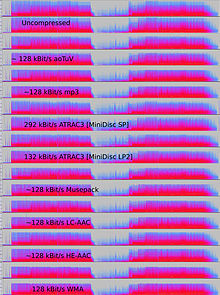Data compression

In signal processing, data compression, source coding, or bit-rate reduction is the process of encoding information using fewer bits than the original representation. Any particular compression is either lossy or lossless. Lossless compression reduces bits by identifying and eliminating statistical redundancy. No information is lost in lossless compression. Lossy compression reduces bits by removing unnecessary or less important information. Typically, a device that performs data compression is referred to as an encoder, and one that performs the reversal of the process (decompression) as a decoder.
The process of reducing the size of a data file is often referred to as data compression. In the context of data transmission, it is called source coding; encoding done at the source of the data before it is stored or transmitted. Source coding should not be confused with channel coding, for error detection and correction or line coding, the means for mapping data onto a signal.
Compression is useful because it reduces resources required to store and transmit data. Computational resources are consumed in the compression and decompression processes. Data compression is subject to a space–time complexity trade-off. For instance, a compression scheme for video may require expensive hardware for the video to be decompressed fast enough to be viewed as it is being decompressed, and the option to decompress the video in full before watching it may be inconvenient or require additional storage. The design of data compression schemes involves trade-offs among various factors, including the degree of compression, the amount of distortion introduced (when using lossy data compression), and the computational resources required to compress and decompress the data.
Comments
Post a Comment